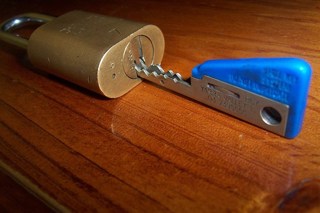By comparison, next worst in the latest survey was Renault on 4.2. Out of 17 categories, Chrysler finished last in 10 and second last in another five. Only in the section on warranty support did dealers report anything approaching mediocre.
Those results are not a great surprise to returning Chrysler UK managing director Simon Elliott. He is scathing about Chrysler’s performance in the two years since he departed to run the company’s operations in China and says he is working hard to regain lost ground.
Last year, Chrysler sales limped to 18,000, way off the 32,000 that Elliott had laid out in his plans before he left. He believes the cause was the model launch plan.
“We grew from a compact brand with eight products to one with 21 products. It’s difficult for both dealers and manufacturer to focus on such a wide range and it’s impossible to market 21 models with our marketing budget while also developing the brand,” Elliott says.
“My operational plan didn’t include launching all those products, so decisions were taken while I was away. There was an opportunity to say no, or say if we take them we need to have more resource.
“As a result of those decisions, dealer profits were compromised, volume targets were over optimistic and our stock levels too high.”
A priority this year is dealer profitability. Elliott won't be specific, but it’s clear that a large proportion of the retail network lost money last year. The network average return on sales slumped from almost 1% to breakeven.
Although no dealers went bust, a significant number gave Chrysler notice of termination last year while others were considering their future. Most have now rescinded their notice.
“Our number one goal is to improve dealers’ profitability,” Elliott says. “In January and February we are tracking 20% up on 2007. The target is to hit 1% return on sales by the end of this year. “Other challenges are to sell the inventory and review the product portfolio.”
By this he means dropping some models, possibly as many as four or five. PT Cruiser and Sebring are in the firing line.
Elliott has set what he calls “sensible volume objectives” for this year of around 20,000. He has told dealers not to self-register in the first quarter and will not offer any end of month incentives or programmes to raise volumes.
“We have to develop showroom traffic,” he says. “We don’t want dealers to be our biggest customer by self-registering.
“We have too many cars in stock – around six months’ worth – but we will sit with those volumes and work through it strategically. We won’t distress cars – it will damage the brand.”
The turnaround will not be an overnight fix. Elliott has a robust plan for the first two quarters. Then he intends to roll out a 60-day recovery plan which will focus on the product portfolio and changes to the marketing strategy.
He has already outlined details of two new initiatives for the network. The first focuses on remarketing and will see dealers buying back used cars from Chrysler instead of them being pumped into the market via auction. Elliott is also keen to reduce the number of sub one-year cars entering the market; he is planning to look at the model mix in the rental market.
The second initiative is called the Get Fit programme. Dealers are being asked to consider the customer experience in the showroom.
Elliott expects them to create positive atmospheres and he wants brand separation between Chrysler, Jeep and Dodge. Too many dealers mix up the models in the showroom.
“We have to generate showroom traffic and our marketing will increase it by 40% this year. Dealers have to build a bridge from the marketing to the showroom.”
“This will be a three-month concerted effort to reward dealers that are making the biggest improvements. Then we will police it for the rest of the year.”
Chrysler is a different business to the one he left. The most obvious change is the fact it is no longer part of DaimlerChrysler. Elliott now has full responsibility for the business and he says the shackles have lifted from the day-to-day decision making. That’s helped him to quickly set up and implement the recovery plan.
This year is all about rebuilding the foundations, says Elliott. 2009 is the year when dealers “can start to make hay again”.
#AM_ART_SPLIT# Chrysler’s big targets
1 Reduce stock in the network – currently running at six months’ worth.
2 Corporate market – take advantage of localised fleet opportunities instead of high cost distress selling to the short-term rental market.
3 Targets – this year they will be set at around 20,000.
4 Network development – 80 “is about right” with current volumes, says Simon Elliott, but he will need to fill some gaps when sales rise.
5 Product portfolio – which cars stay, which go.
6 Brand development – the group is in a stagnant position: Jeep is still viewed as iconic; Chrysler is known for its models, not the brand; Dodge has not registered with the market yet.

















Login to comment
Comments
No comments have been made yet.